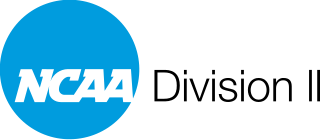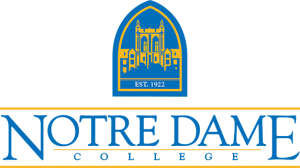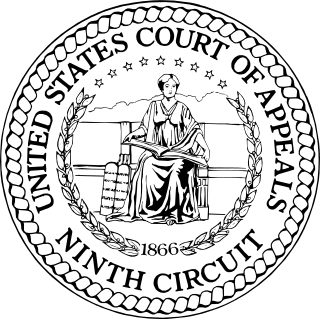
The National Collegiate Athletic Association (NCAA) is a nonprofit organization that regulates student athletics among about 1,100 schools in the United States, and one in Canada. It also organizes the athletic programs of colleges and helps over 500,000 college student athletes who compete annually in college sports. The organization is headquartered in Indianapolis, Indiana.

The Big Ten Conference is the oldest NCAA Division I collegiate athletic conference in the United States. Founded as the Intercollegiate Conference of Faculty Representatives in 1896, it predates the founding of its regulating organization, the NCAA. It is based in the Chicago area in Rosemont, Illinois. For many decades the conference consisted of ten prominent universities, which accounts for its name. On August 2, 2024, the conference expanded to 18 member institutions and 2 affiliate institutions. The conference competes in the NCAA Division I and its football teams compete in the Football Bowl Subdivision (FBS), formerly known as Division I-A, the highest level of NCAA competition in that sport.

The Big 12 Conference is a college athletic conference headquartered in Irving, Texas. It consists of 16 full-member universities in the states of Arizona, Colorado, Florida, Iowa, Kansas, Ohio, Oklahoma, Texas, Utah, and West Virginia.

The Atlantic 10 Conference (A-10) is a collegiate athletic conference whose schools compete in the National Collegiate Athletic Association's (NCAA) Division I. The A-10's member schools are located mostly on the East Coast and Midwest of the United States: Illinois, Massachusetts, Missouri, New York, North Carolina, Ohio, Pennsylvania, Rhode Island, Virginia, and Washington, D.C.

The National Association of Intercollegiate Athletics (NAIA) established in 1940, is a college athletics association for colleges and universities in North America. Most colleges and universities in the NAIA offer athletic scholarships to their student athletes. Around $1.3 billion in athletic scholarship financial aid is awarded to student athletes annually.

The Association for Intercollegiate Athletics for Women (AIAW) was a college athletics organization in the United States, founded in 1971 to govern women's college competitions in the country and to administer national championships. It evolved out of the "Commission on Intercollegiate Athletics for Women" (CIAW), founded in 1967. The association was one of the biggest advancements for women's athletics on the collegiate level. Throughout the 1970s, the AIAW grew rapidly in membership and influence, in parallel with the national growth of women's sports following the enactment of Title IX.

NCAA Division I (D-I) is the highest level of intercollegiate athletics sanctioned by the National Collegiate Athletic Association (NCAA) in the United States, which accepts players globally. D-I schools include the major collegiate athletic powers, with large budgets, more elaborate and nicer facilities and a few more athletic scholarships than Divisions II and III as well as many smaller schools committed to the highest level of intercollegiate competition.

College basketball is basketball that is played by teams of amateur student-athletes at universities and colleges. In the United States, colleges and universities are governed by collegiate athletic bodies, including the National Collegiate Athletic Association (NCAA), the National Association of Intercollegiate Athletics (NAIA), the United States Collegiate Athletic Association (USCAA), the National Junior College Athletic Association (NJCAA), and the National Christian College Athletic Association (NCCAA). Each of these various organizations is subdivided into one to three divisions, based on the number and level of scholarships that may be provided to the athletes. Teams with more talent tend to win over teams with less talent.

NCAA Division III (D-III) is a division of the National Collegiate Athletic Association (NCAA) in the United States. D-III consists of athletic programs at colleges and universities that choose not to offer athletic scholarships to their student-athletes.

NCAA Division II (D-II) is an intermediate-level division of competition in the National Collegiate Athletic Association (NCAA). It offers an alternative to both the larger and better-funded Division I and to the scholarship-free environment offered in Division III.

The California Collegiate Athletic Association (CCAA) is a college athletic conference affiliated with the National Collegiate Athletic Association (NCAA) at the Division II level. All of its current members are public universities, and upon UC San Diego's departure on July 1, 2020, all are members of the California State University system.

Notre Dame College was a private Roman Catholic college in South Euclid, Ohio. Established in 1922 by the Sisters of Notre Dame as a women's college, it was coeducational from January 2001 until its closure. The Sisters of Notre Dame ended their sponsorship of the college in 2023. In February 2024, the college announced it would be closing at the end of the spring semester, with agreements in place for existing students to complete their degrees at partner colleges and universities. The college ultimately closed on May 2, 2024.

College athletics in the United States or college sports in the United States refers primarily to sports and athletic training and competition organized and funded by institutions of tertiary education in a two-tiered system.

The Power Five conferences, also called the Power Four conferences, are the five most prominent athletic conferences in college football in the United States. They are part of the Football Bowl Subdivision (FBS) of NCAA Division I, the highest level of collegiate football in the nation, and are considered the most elite conferences within that tier. The Power Five conferences have provided nearly all of the participants in the College Football Playoff since its inception, and generally have larger revenue, budgets, and television viewership than other college athletic programs.
National Collegiate Athletic Association v. Smith, 525 U.S. 459 (1999), was a case in which the Supreme Court of the United States ruled that the NCAA's receipt of dues payments from colleges and universities which received federal funds, was not sufficient to subject the NCAA to a lawsuit under Title IX.
The Knight Commission on Intercollegiate Athletics, often referred to simply as the Knight Commission, is a panel of American academic, athletic and sports leaders, with an eye toward reform of college athletics, particularly in regard to emphasizing academic values and policies that ensure athletic programs operate within the educational missions of their universities.

Conference Carolinas, formerly known as the Carolinas-Virginia Athletic Conference (CVAC) or the Carolinas Conference, is a college athletic conference affiliated with the National Collegiate Athletic Association (NCAA) primarily at the Division II level. It is also considered as one of the seven Division I conferences for men's volleyball. Originally formed in 1930, the league reached its modern incarnation in 1994. Member institutions are located in the southeastern United States in the states of Georgia, North Carolina, South Carolina, and Tennessee. The Conference Carolinas membership currently consists of 15 small colleges or universities, 13 private and two public.

O'Bannon v. NCAA, 802 F.3d 1049, was an antitrust class action lawsuit filed against the National Collegiate Athletic Association (NCAA). The lawsuit, which former UCLA basketball player Ed O'Bannon filed on behalf of the NCAA's Division I football and men's basketball players, challenged the organization's use of the images and the likenesses of its former student athletes for commercial purposes. The suit argued that upon graduation, a former student athlete should become entitled to financial compensation for NCAA's commercial uses of their image. The NCAA maintained that paying its athletes would be a violation of its concept of amateurism in sports. At stake are "billions of dollars in television revenues and licensing fees."
The definition of amateurism within the context of collegiate sports has evolved since it was first pronounced by the NCAA upon its inception in 1906. In its early stages, changes in the NCAA's core beliefs in what a student-athlete should be rewarded and allowed to accept financially for their athletic talents had its effects on the definition of amateurism. Over the course of the 20th and early 21st century, regulatory changes, court claims, and the beliefs of NCAA authority about student-athlete compensation further developed what an amateur collegiate athlete is entitled to receive. This evolution is what impacted the evolving logistics of the NCAA Bylaw 12, which explains the current definition of amateurism and what it grants or restricts a collegiate athlete to be able to receive as compensation for their participation. These guidelines have been described to both benefit and unjustifiably limit the student-athlete and the success of institutions’ athletic performance. This debate has been a strong driver in court claims against the NCAA and the mainstream controversy about what student-athletes should have the right to receive financially.
National Collegiate Athletic Association v. Alston, 594 U.S. ___ (2021), was a landmark United States Supreme Court case concerning the compensation of collegiate athletes within the National Collegiate Athletic Association (NCAA). It followed from a previous case, O'Bannon v. NCAA, in which it was found that the NCAA was profiting from the namesake and likenesses of college athletes. The case dealt with the NCAA's restrictions on providing college athletes with non-cash compensation for academic-related purposes, such as computers and internships, which the NCAA maintained was to prevent the appearance that the student athletes were being paid to play or treated as professional athletes. Lower courts had ruled that these restrictions were in violation of antitrust law, which the Supreme Court affirmed in a unanimous ruling in June 2021.
















